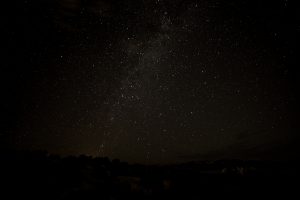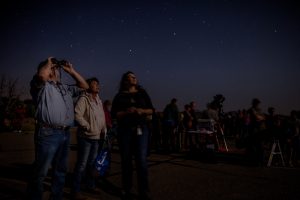Steinaker State Park Receives International Dark-Sky Designation
SALT LAKE CITY — The International Dark-Sky Association awarded Steinaker State Park International Dark-Sky Park status on January 22, 2018.
This is the fourth Utah state park to receive dark sky designation, joining Antelope Island, Goblin Valley, and Dead Horse Point state parks. An event to celebrate the designation will be hosted in the Spring of 2018.
In order to earn this international honor, Steinaker State Park staff took measurements of the quality of their night sky over the course of a year and a half; held fun, educational night sky events; and changed their bulbs and fixtures to enhance views of the stars.
They also kept the public informed of their progress through presentations at public meetings, features in traditional and social media, and installing informational panels.
Utah State Parks Director Fred Hayes is excited so many parks in the state parks system are enhancing their spectacular night skies because it falls in line with his “more people having more fun in more parks more often” philosophy.
“Having internationally-recognized dark skies bolsters our ability to attract more visitors and offer more night programming,” Hayes said, “which results in more people enjoying our parks at more times of the day.”
Utah leads the country in Dark Sky designations. Visitors from across the country and around the world routinely tell Utah State Parks staff they have specifically come to their parks to get a glimpse of the Milky Way or other celestial wonders for the first time.
Dark Sky programs attract as many as 200 participants and include star parties, full moon hikes, scorpion safaris, and owl prowls.
International Dark-Sky Association Executive Director J. Scott Feierabend said, “With today’s announcement recognizing IDA dark-sky status for Steinaker State Park, Utah retains and expands its impressive lead among U.S. states in terms of the number of places whose night skies are under meaningful stewardship. Steinaker’s proactive strategies to conserve natural nighttime darkness in the park ensure that Utahns of today and tomorrow continue to have access to this precious and increasingly threatened resource.”
There are a dozen more Utah State Parks that are in various stages of the International Dark Sky Park application process.



If you found this blog entry interesting, please consider sharing it through your social network.